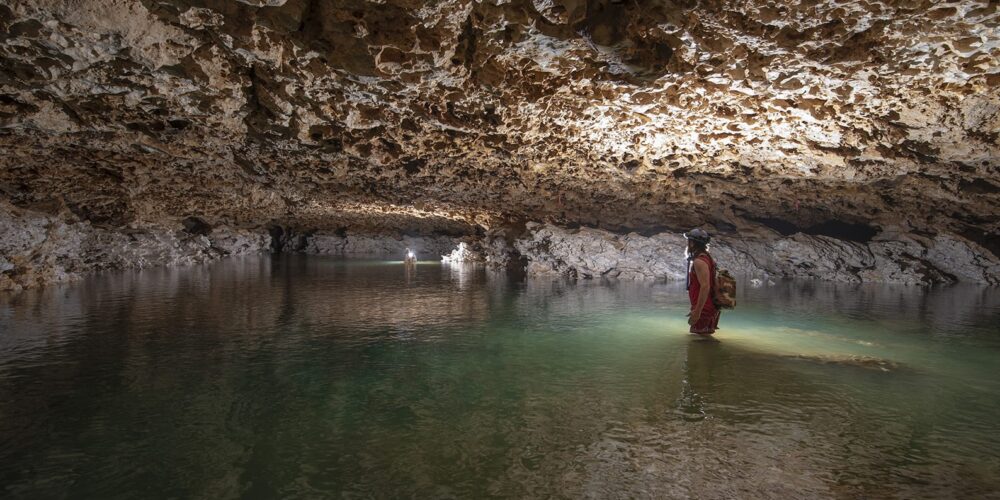Curtin researchers join cavers to study elusive species on Christmas Island

Curtin University researchers have joined with expert cavers on a mission to learn more about new and elusive underwater species, by exploring the hidden depths of caves across Christmas Island, off the north coast of Western Australia.
The Curtin research team partnered with the Western Australian Speleological Group (WASG) to collect water and sediment samples from the bottom of 23 caves and springs, and then analysed the DNA species shed in the water using the powerful survey technique called ‘eDNA metabarcoding’.
Using this technique, the team was able to detect new and elusive species such as the Indonesian shortfin eel, previously found on Christmas Island and in caves across the Indo-Pacific, freshwater jellyfish, typically found in calm freshwater lakes and reservoirs around the world but not on Christmas Island, and slender springtails, previously found in caves on mainland Western Australia, but never on Christmas Island.
Lead researcher PhD candidate Katrina West, from the School of Molecular and Life Sciences at Curtin University, said the two-week expedition was a year in the making and provides new insights into Christmas Island’s cave biodiversity.
“As the researcher in the field, I underwent extensive planning and training with 10 cavers from the WASG before the team could even attempt this important research expedition. We undertook abseiling, underground navigation, safety drills and cave conservation training to reduce our impact on the untouched cave environments, as well as the risk of an accident,” Ms West said.
“As a team, we also practiced coordinated cave trips and rescues in the south-west of WA in the lead-up to the successful Christmas Island expedition, which has shed new light on the island’s unique ecosystem.
“Subterranean environments, such as caves found on Christmas Island, are greatly underexplored and it has been estimated that more than 80 per cent of Australia’s subterranean fauna are yet to be discovered.”
These types of environments are typically home to a range of terrestrial and aquatic animals, including fresh and saltwater fish, eels, gastropods, salamanders, flatworms, insects, water mites and crustaceans, which often evolve in isolation and over time can diverge into new species and sub-species.
Ms West said by retrieving their shed DNA from the environment, the team was able to determine which species lived in which cave and how these communities changed with the level of salinity and dissolved oxygen in each location.
“In addition to our eDNA findings, the team deployed drones to uncover and explore a new cave system on Christmas Island, dubbed Ryan’s Ripper Rift, and also new technology to 3D map underground cave passages,” Ms West said.
The research team was also able to use the data collected, as well as environmental parameters such as salinity, dissolved oxygen, and temperature, to show which caves were connected underground across Christmas Island, identifying three cave and spring groups that shared the same types of species and water quality readings.
The full paper titled, “Under the karst: detecting hidden subterranean assemblages using eDNA metabarcoding in the caves of Christmas Island, Australia,” has been published in the journal Scientific Reports and can be found online here.



